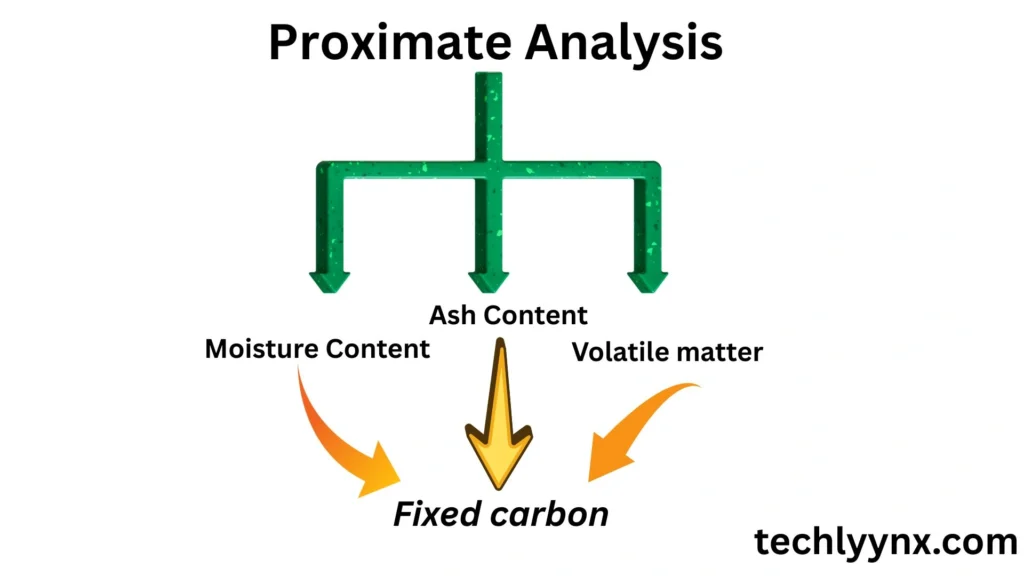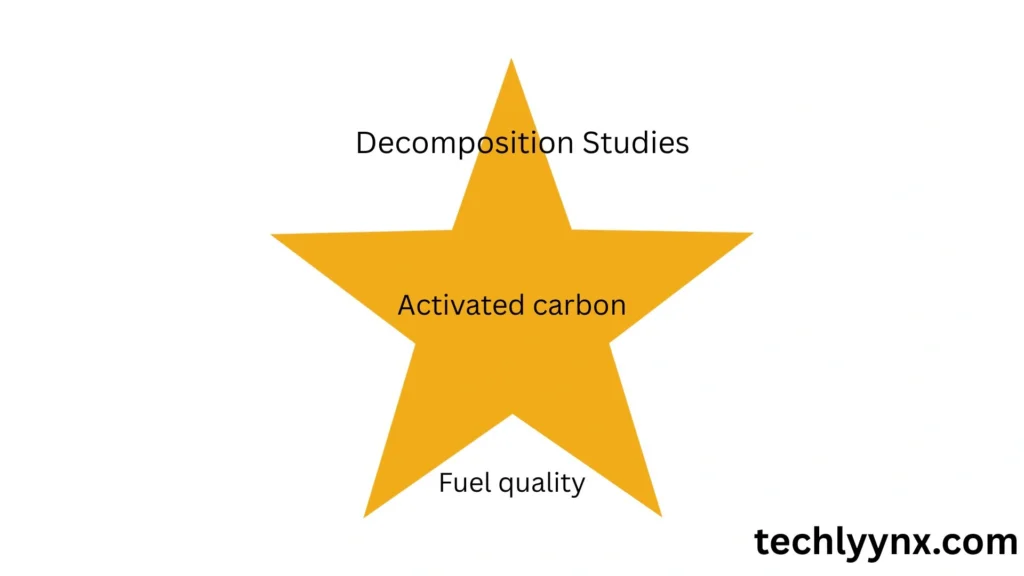Suppose that someone claims that he has a substance that has 0% carbon. Will you believe? If not, then why? The answer is very simple: you can’t make the carbon percentage 0 in any of the natural substances or materials. It will remain in different forms in the material and can’t be dropped to 0. Now, how to determine how much carbon this material actually has mean fixed carbon ? That’s its property, and it can’t be removed anyway. Getting curious? Then come and know.
Banana Peel Proximate Analysis: What we found?
In the continuing post we will discuss about fixed carbon, its importance, and the methods to measure its quantity in a substance.
What is Fixed Carbon?
It is the solid, nonvolatile carbon content remaining in a material after complete removal of volatile and moisture substances. In simple words, this is the quantity of the carbon that doesn’t vaporize during heating and stays behind as char or a solid substance.
This is often present as the components of CO₂ and CH₄..
This is a widely used technique in biomass and agricultural waste analysis.
Fixed Carbon Building Blocks

There are some tests that are an important basis for this determination. After performing those tests, the analysis becomes really easy to conduct.
These tests are
- Moisture Content
- Volatile matter
- Ash Content
We need results for these tests of proximate analysis to determine fixed carbon value.
As we have already performed these tests with banana peel, here this next step applies: we need to determine this.
The results we got for these analyses are
- Moisture content for banana peel is 9.6%.
- The value of volatile content was 73.19%.
- Ash content was found to be 9.46%.
Now we will use these results and apply the formula to calculate its value.
Calculation of Fixed Carbon
By using the values of moisture, volatile matter, and ash tests, we calculated the fixed carbon.
The formula for the determination of this carbon is
Fix carbon = 100. – volatile matter – ash content – moisture content
Putting the values of the required species, we got the result.
Fix carbon = 100% – 73.19% – 9.46% – 9.6%
Fix carbon = 7.7%
The value for our banana peel sample was 7.7%. This value is quite normal and acceptable, as the value we studied from other sources and experiments was around 5 to 15% for these types of samples.
Fixed Carbon Proximate Analysis Table
| Parameter | Value (%) |
|---|---|
| Moisture Content | 9.60 |
| Volatile Matter | 73.19 |
| Ash Content | 9.46 |
| Fixed Carbon | 7.70 |
Importance of Fixed Carbon

Based on our research and analysis, We found that
There are some important benefits.
According to our research, the following results we achieved, leading to its importance.
- It indicates the fuel quality. A higher value means higher quality of fuel. As carbon helps a lot in combustion.
- These values are often used as potential for biochar, activated carbon, or fuel applications.
- This analysis also helps in thermal decomposition studies. Thermal decomposition means change in nature caused by heat.
- Very useful in waste-to-energy projects. Occupies a certain space in the field of sustainable and green energy.
The Common Problem
Whenever you try to do something unusual and unique, this will really call for some problems that should be addressed in order to get your desired results. Same here in the lab, we had done the pre-tests and performances, and there was time to do the analysis.
We tried to search for its formula in our course plan but in vain. Most probably this was the point of our skills and learning judgement.
We tried to find this from the internet but got confused due to many similar formulas. Then at last, when we were unable to get any clue from anywhere, we decided to solve this issue on our own.
By simply applying the definition of fixed carbon—that this is the content remaining after moisture, volatile, and ash analysis—we got the solution.
We made our formula for use.
Fix carbon = 100. – moisture content – ash content – volatile content
After deriving this relation, we cross-checked this from the internet again and found that it was correct. This was the brainstorming involved in this analysis.
Why is Fix Carbon in Banana Peel Important?
As we have performed the analysis and got its value for banana peel. Also, we know the importance of banana peel.
Here is the point of why only banana peel fixing carbon is important. Are there other organic wastes like this to produce a higher amount of fixed carbon?
Yes, there are a lot of other organic wastes like banana peels, but what makes it unique from others is its abundant nature. A banana is like a fruit you can find in any weather condition. The other reason is its very straightforward methodology. You don’t need special equipment or procedures to do it . Due to its high production, availability, and simple methodology, it is the best organic material around the world, serving a great value.
We will also research other agricultural wastes in upcoming posts. Try to find its value and importance in other wastes except for banana peels.research
Conclusion :
In short fixed carbon is an important parameter to evaluate and measure the energy potential of organic waste or biomass. Our analysis of banana peel shows the fixed carbon content is 7.7%, which typically falls in the optimal range. The abundance, simple processing, and very cheap nature with relevance to bioenergy make it a valuable resource.
Now, just like banana peels, the research on other organic wastes is in progress. We can hope that in the future we will have a choice in bioenergy sources. This will also make comparisons of other agricultural wastes to banana peels to identify the most promising ones.

